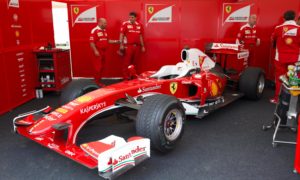This morning the tragic news came through that Dan Wheldon had been killed in an IndyCar race in Las Vegas yesterday. The popular and talented Englishman was involved in a 15-car pile-up on lap 12 of the race, and succumbed to ‘unsurvivable’ injuries soon after.
This website does not cover the sport of IndyCar racing. But the loss of Wheldon is a terrible one that has potential repercussions across all motorsport and even into the hallowed arena of F1. Lessons can and must be learnt in the United States from Wheldon’s death, but what can the European-based version of top-tier single-seater racing learn?
Fundamentally, that Wheldon’s crash is an untimely reminder that motorsport is dangerous. A number of commentators this morning, not least Mark Blundell on BBC Radio 4, appeared to be suggesting that the circuit and event had been at fault. Blundell, referring to Wheldon’s potential prize money, said that “the dice were rolled on the track when they should have been kept in the casino.”
Any criticism of Blundell should be heavily qualified by acknowledgement of his racing prowess, not least in IndyCars themselves. But here he is misguided. Safety at the Las Vegas Motor Speedway could have been 200% better and it would not have saved Wheldon’s life. Nor is the extra incentive of prize money to blame. Drivers always want to do well, to win; no racer will follow others if there is even the slightest chance he can pass.
Blaming the extra 30mph of speed that IndyCars have over F1 cars, or perhaps the lack of canopy over single-seaters, would also be wrong. Granted, IndyCars tend to run in packs more than F1 cars, and more often three- and four-abreast. Nor does running 34 cars on a 1.5mile oval assist safety overmuch. But all that means is that the chances of a serious, injurious or fatal accident in IndyCar are higher. It does not signify that F1 is safe. Commentators’ criticism of IndyCar racing in the wake of yesterday may suggest that they think that drivers wouldn’t die if that accident had happened in F1. It is an unspoken complacency that must be guarded against.
In reality, a combination of high speed and bad luck caused poor Dan Wheldon’s accident – two factors that are both found in F1. A canopy, proposed in the wake of Felipe Massa’s Hungary accident, probably wouldn’t have saved the man from Buckinghamshire either. A lot of space and a vast run-off would have, but at every circuit in the world you stand a sizeable chance of hitting something if you take off at 200mph-plus.
Which is exactly why Mark Webber was so lucky in Valencia in 2010, and why everyone should be watching from behind their fingers when cars are wheel-to-wheel down the pit straight. Drivers of open-cockpit cars are incredibly vulnerable in two situations – if something enters the cockpit and if and when the chassis leaves the ground. Both scenarios have come to pass in very recent F1 history, and it is, brutally, luck that neither driver was killed.
And here we confront a paradox about our sport. It is, in some part, that danger that makes it such an enthralling spectacle. We the fans adore daredevil drivers who show no fear when side-by-side, or those who go for a narrowing gap. Dan Wheldon was one of those drivers, a great hero to very many in the world of motorsport. And as such he will remain – someone who conquered fear and speed, but who could not conquer danger.








